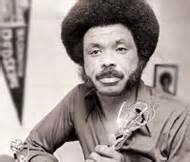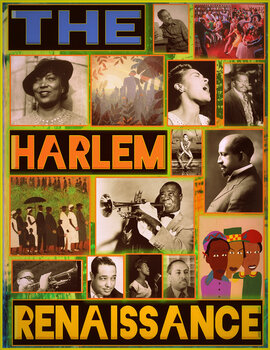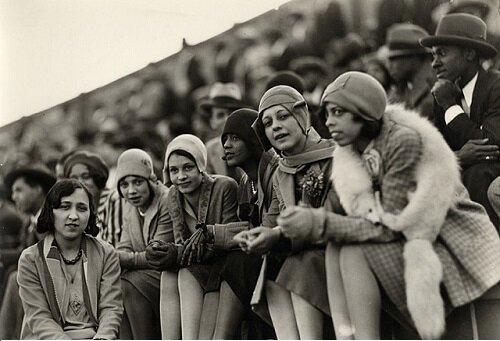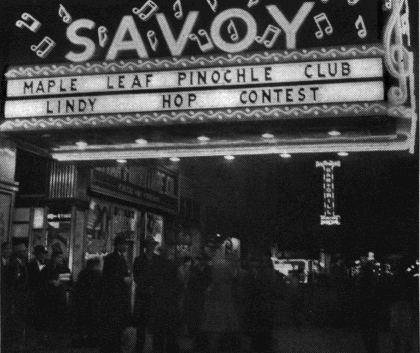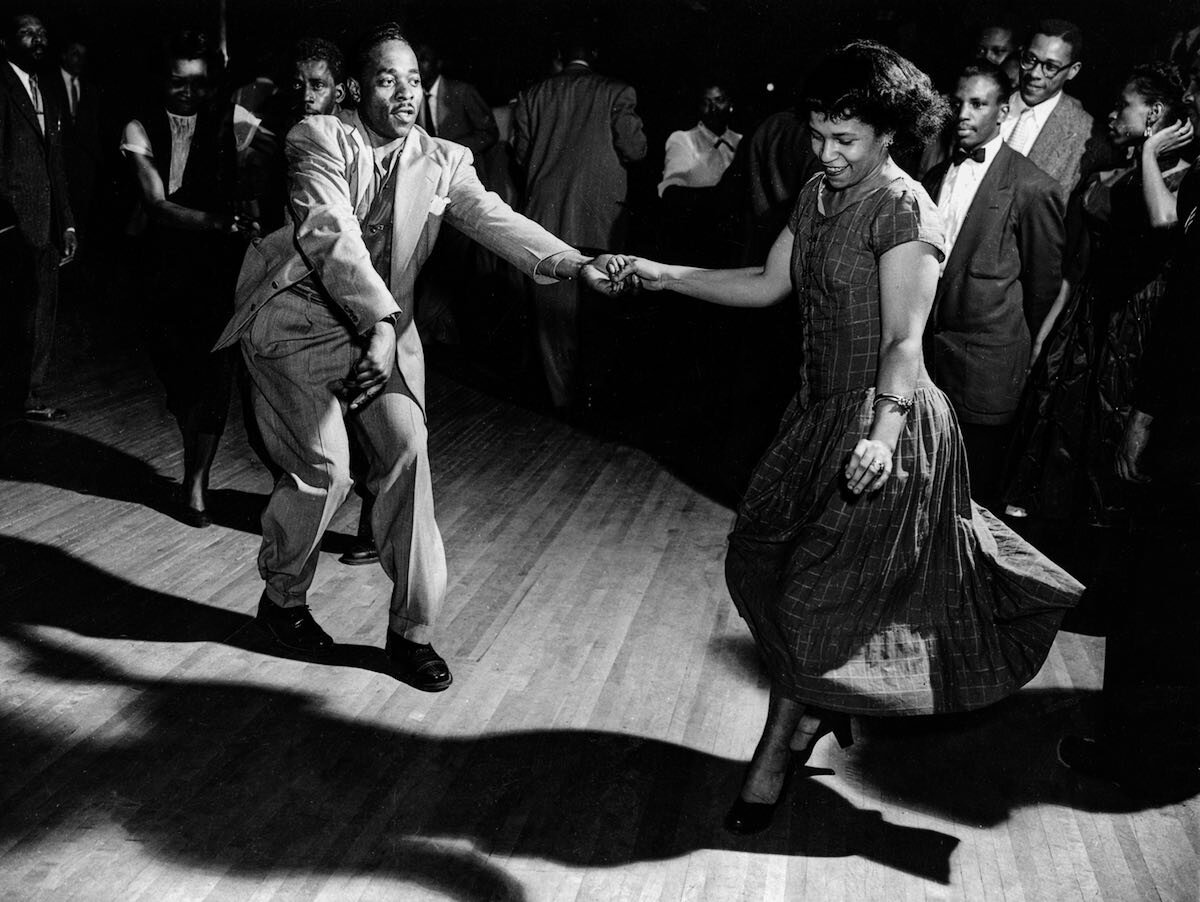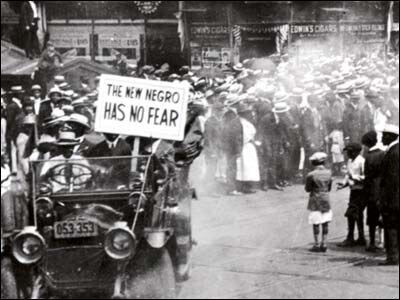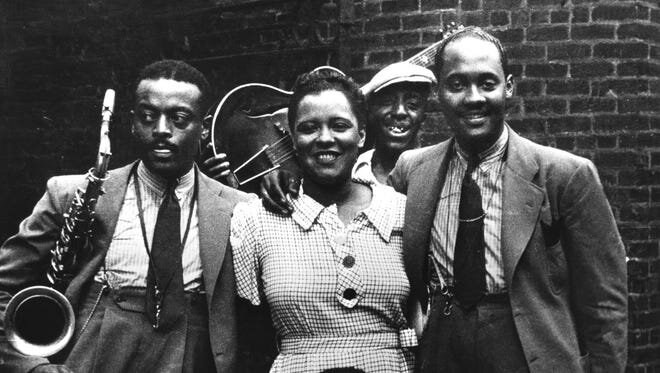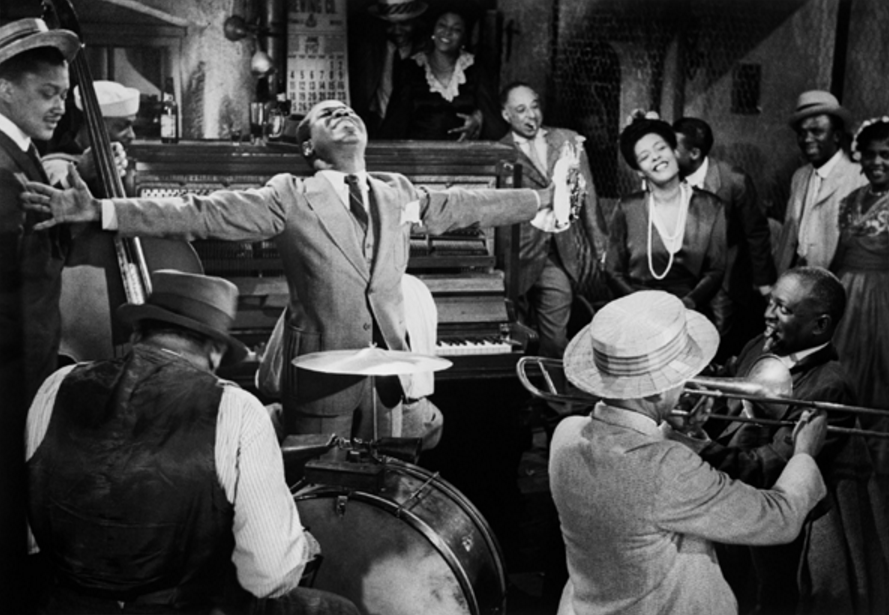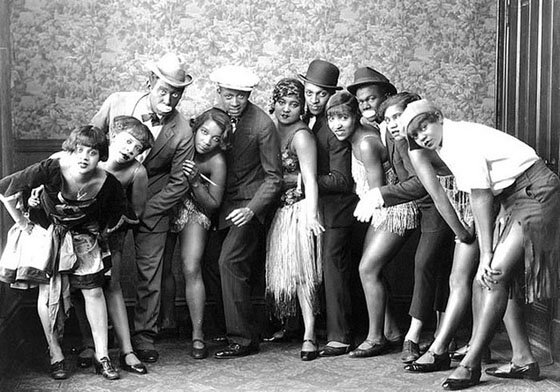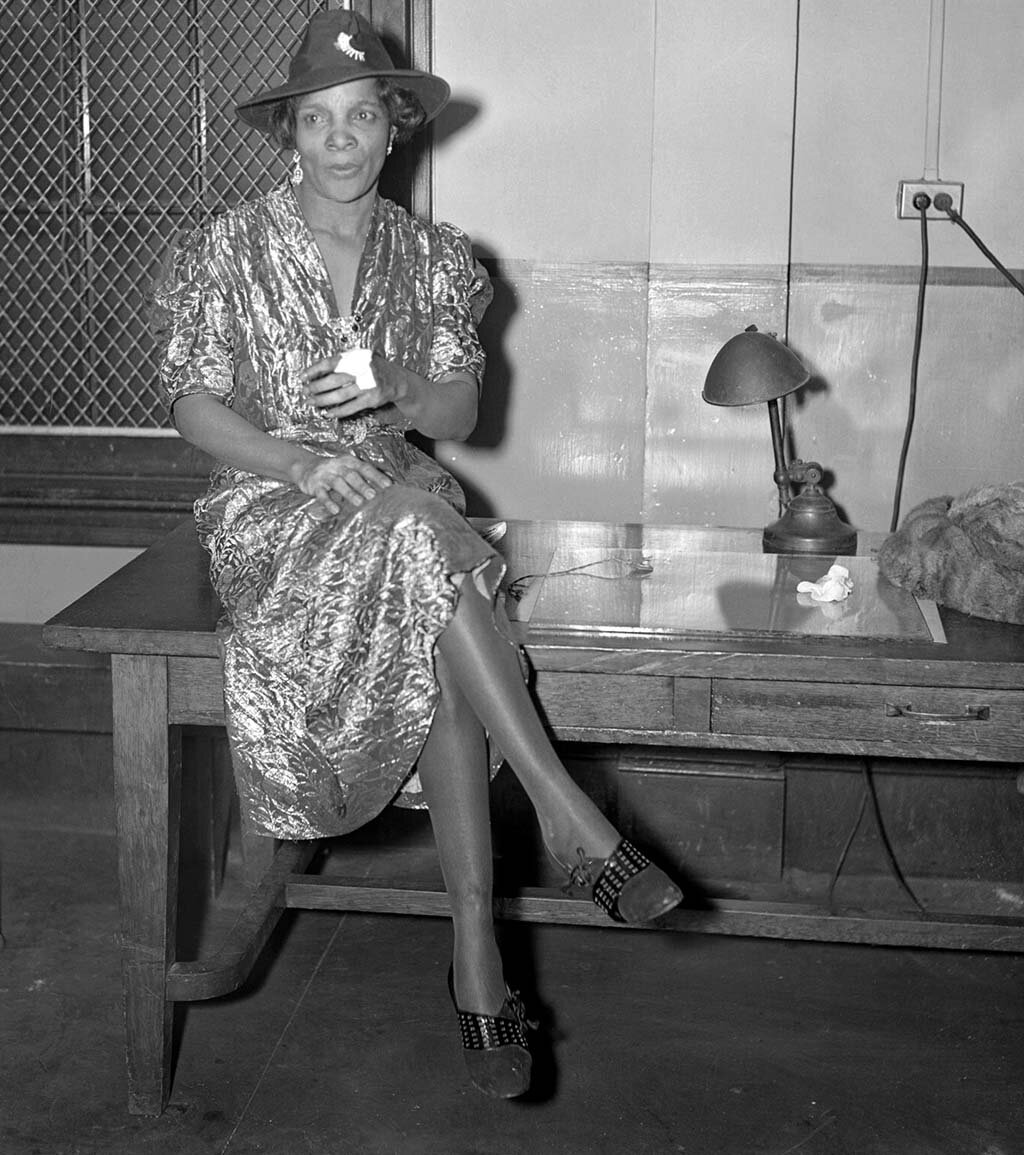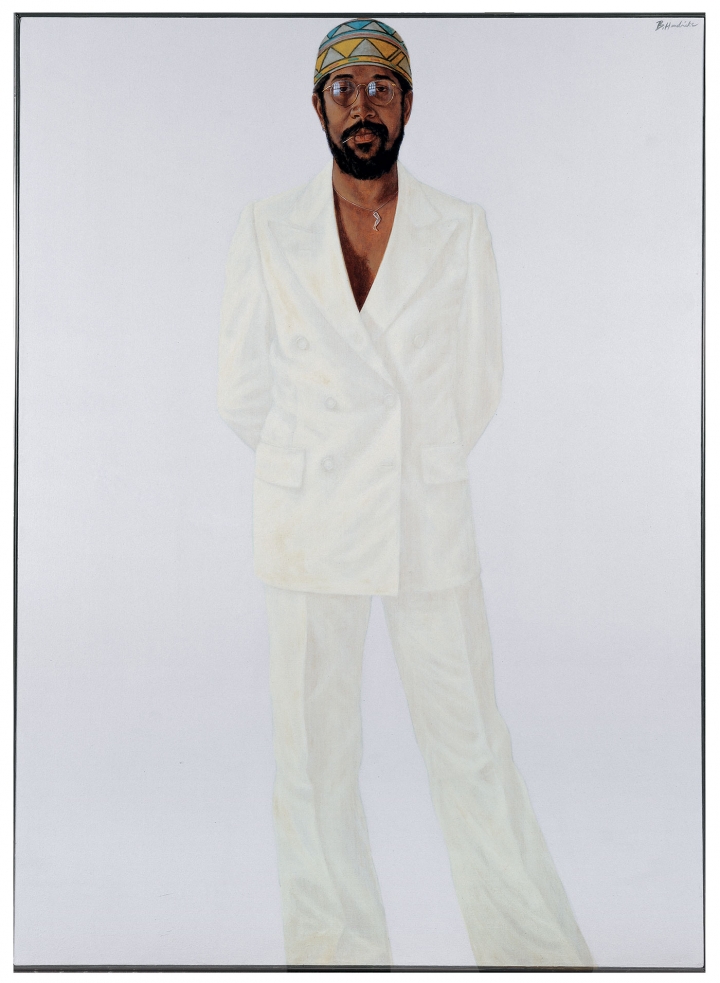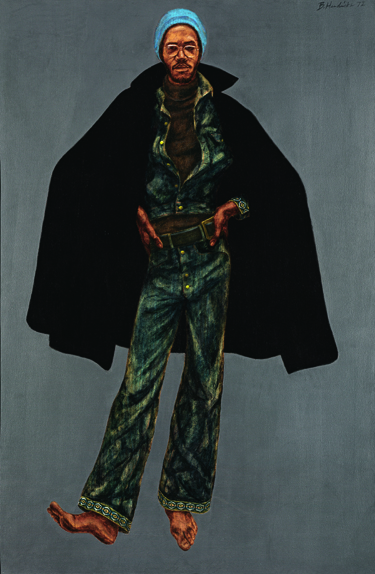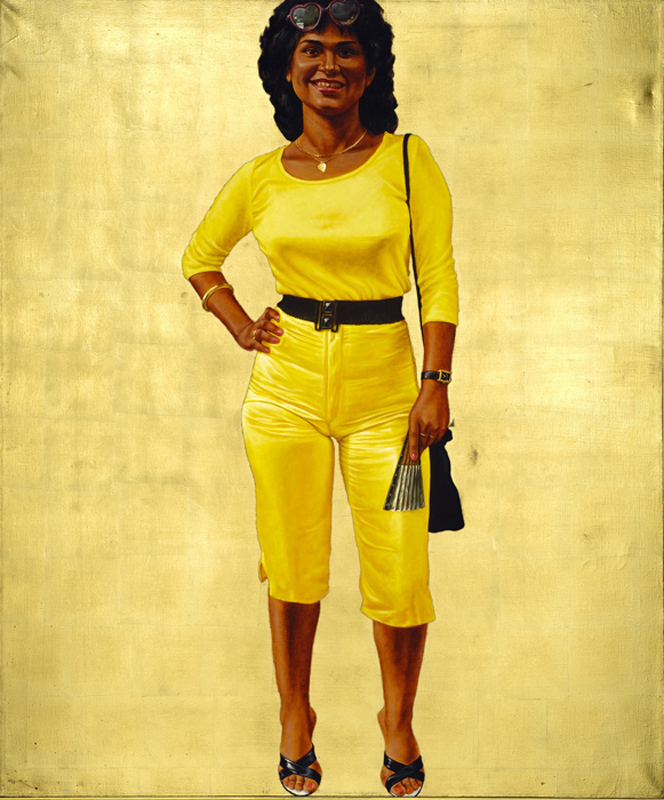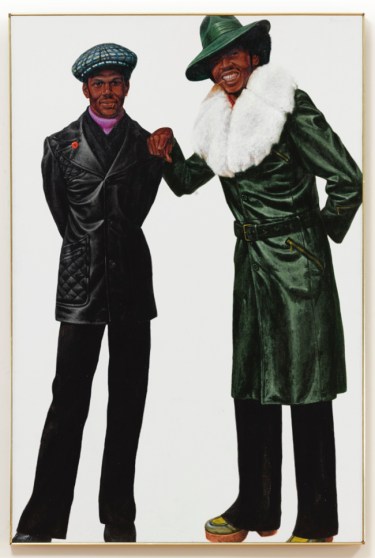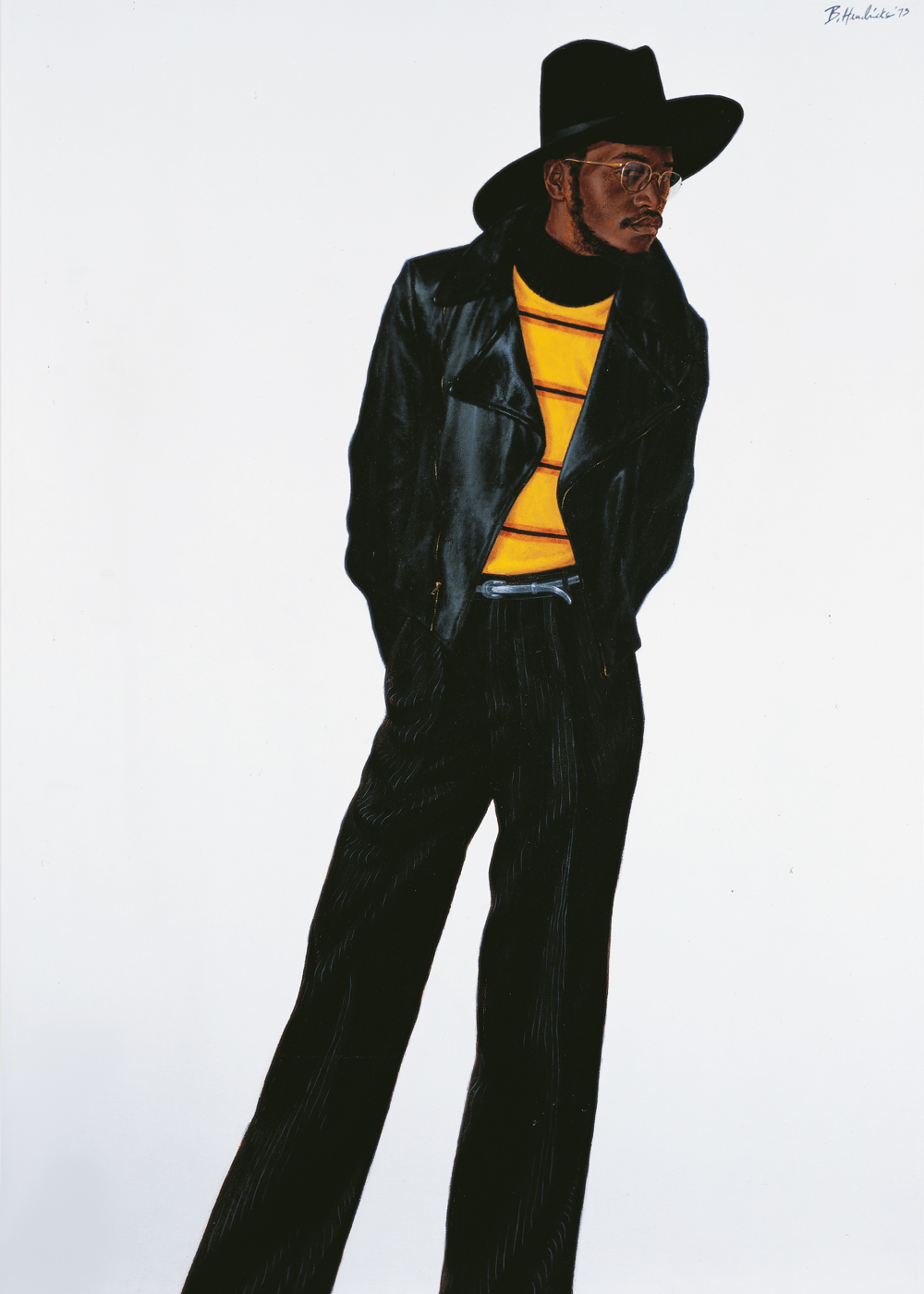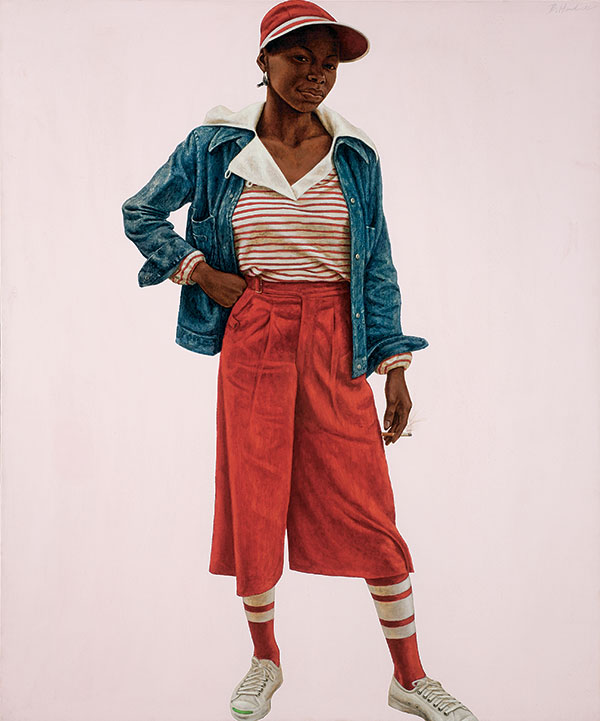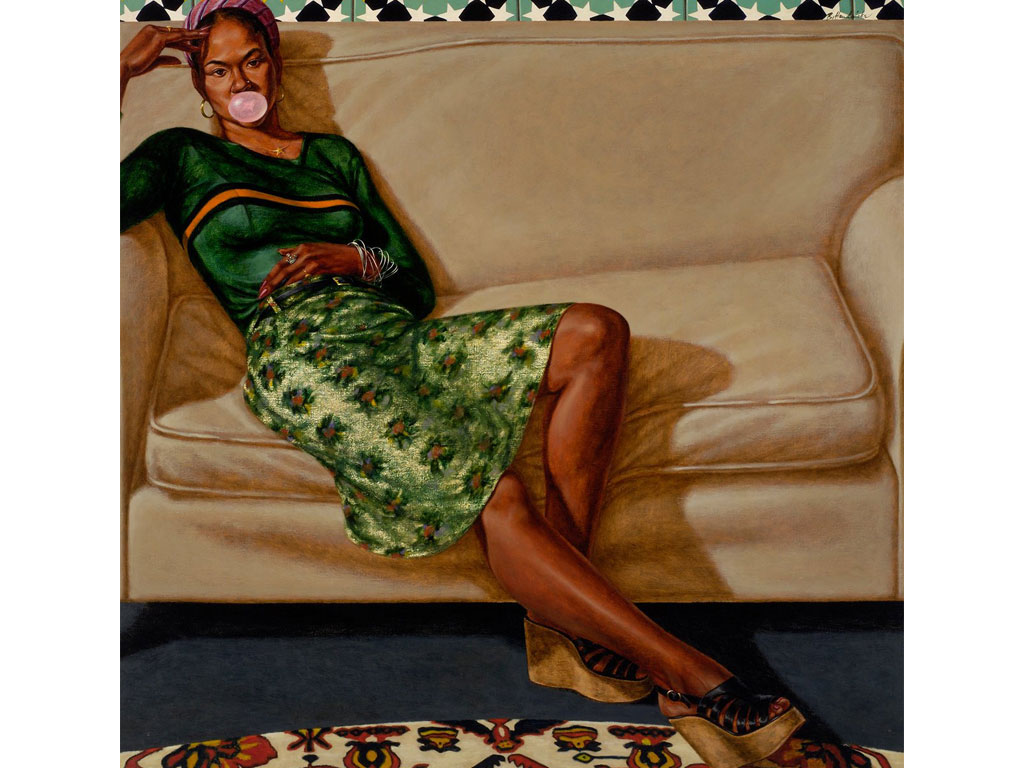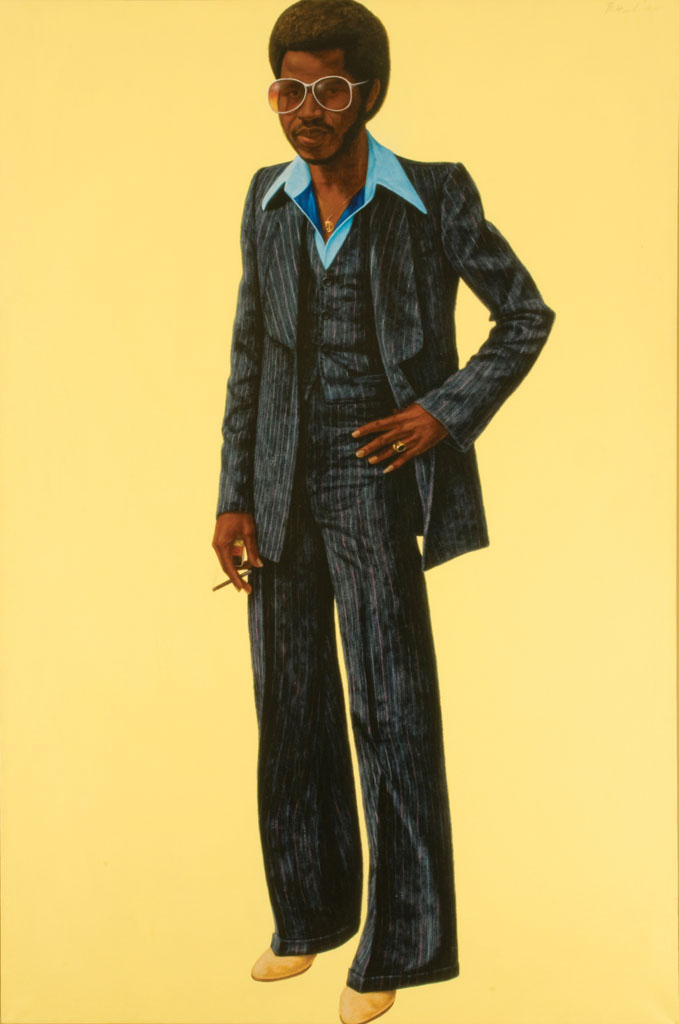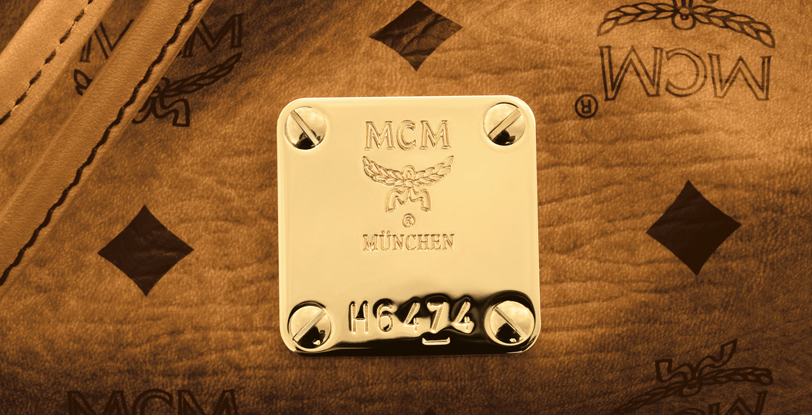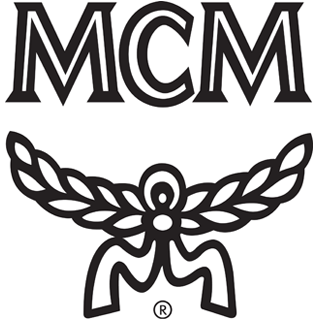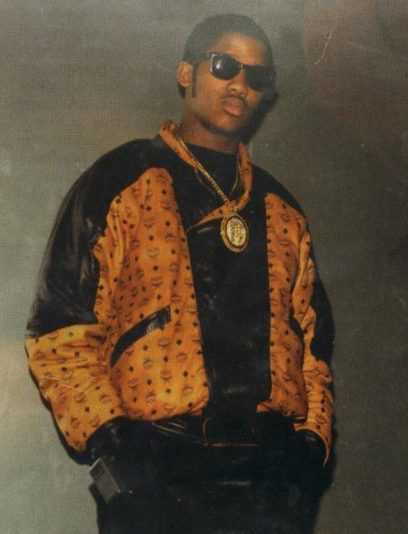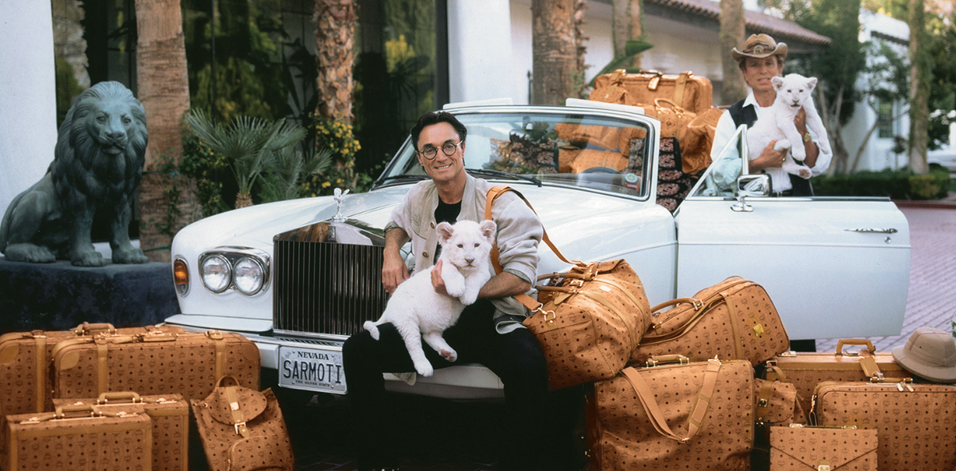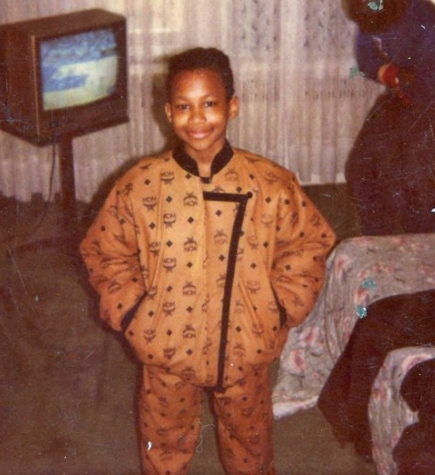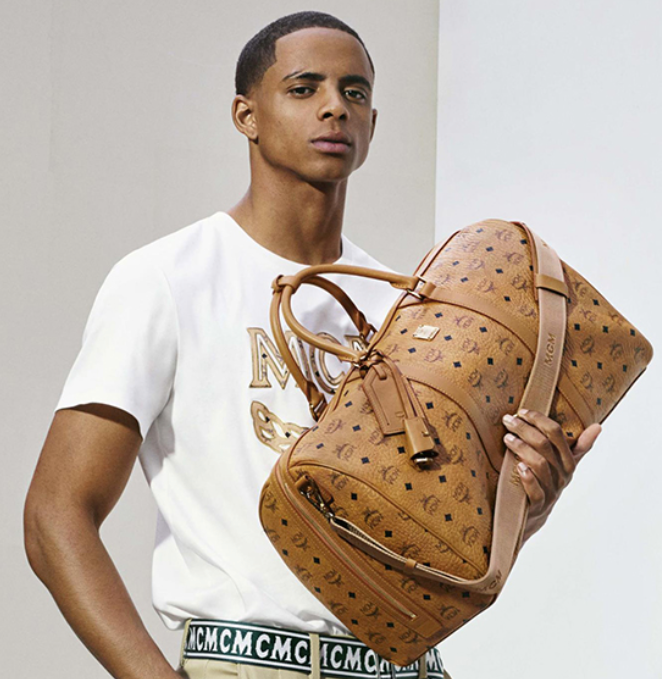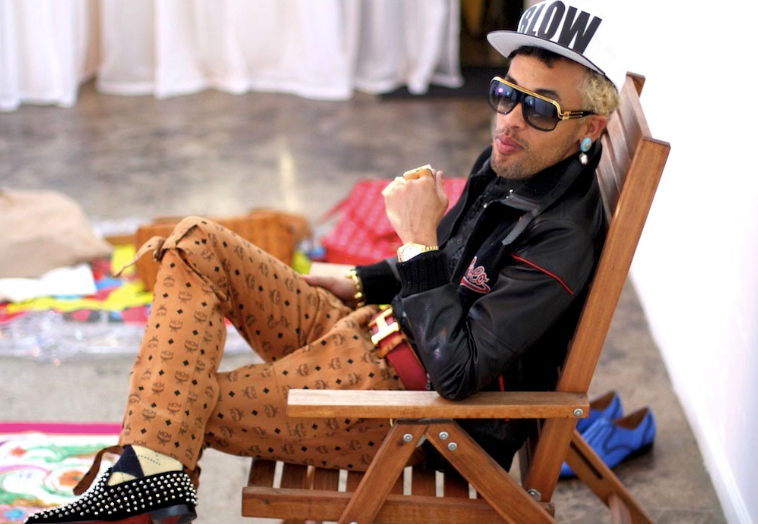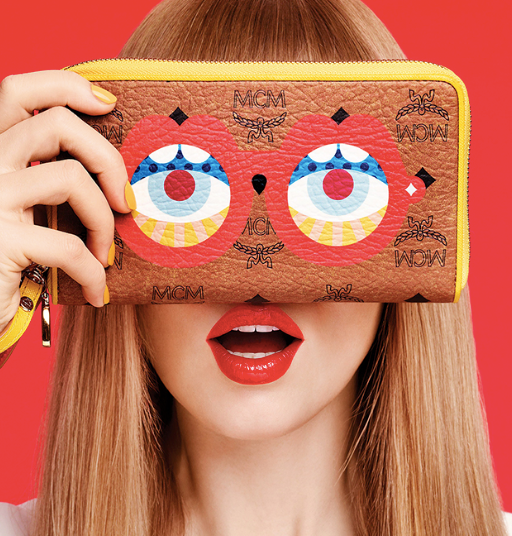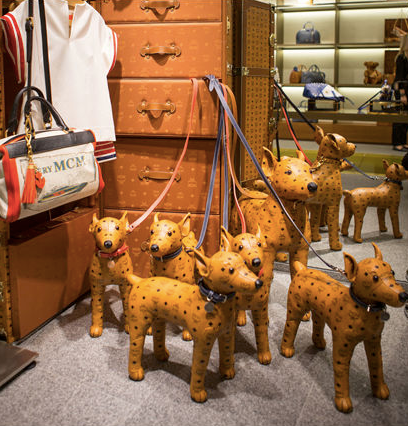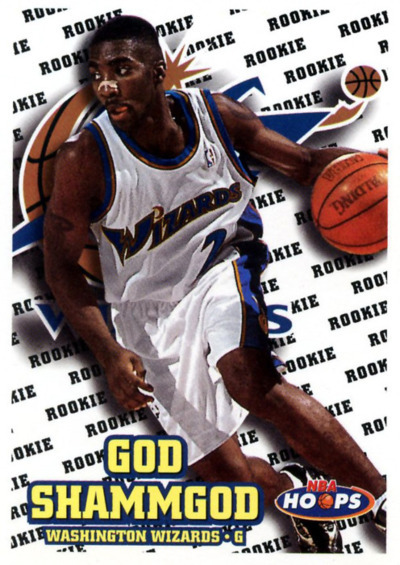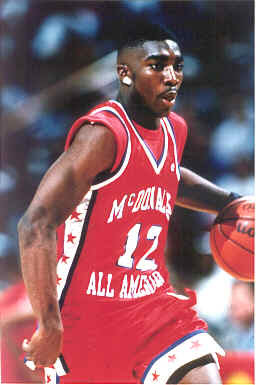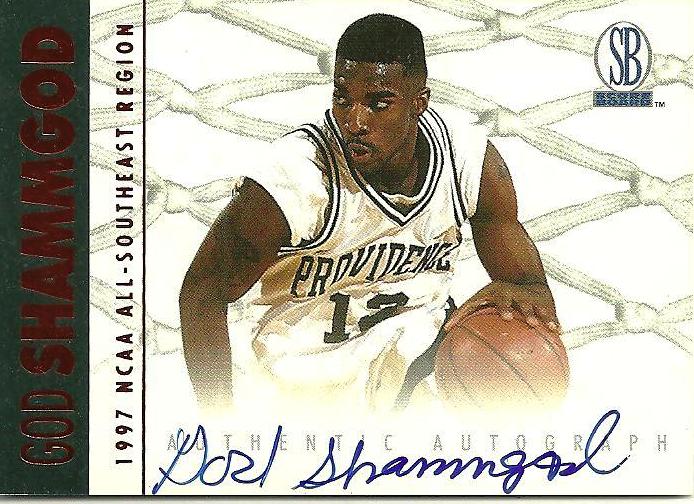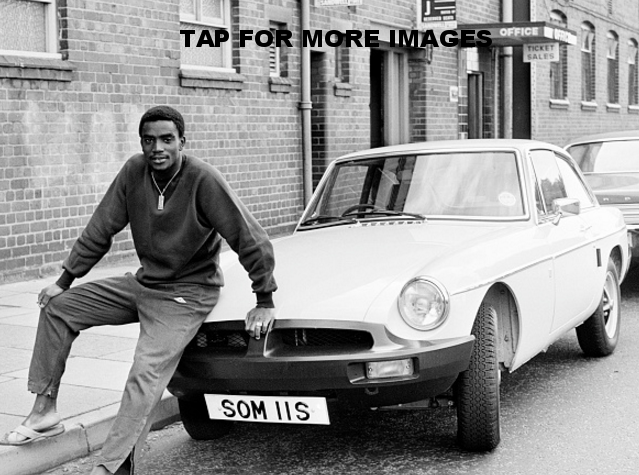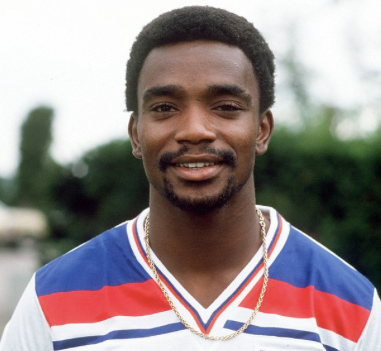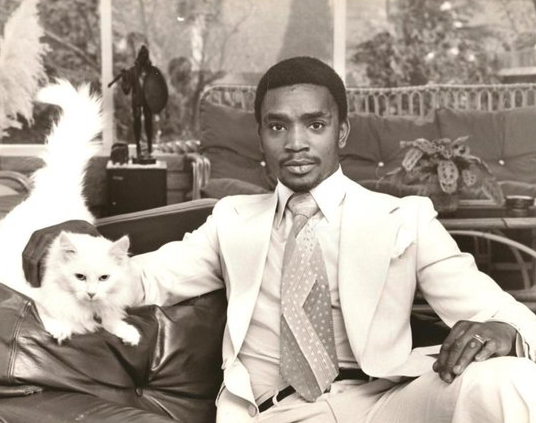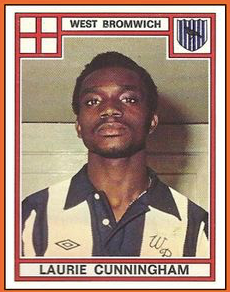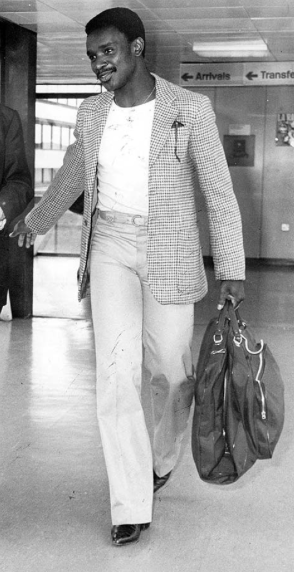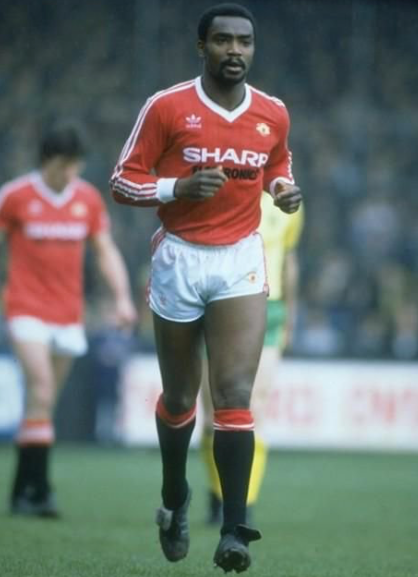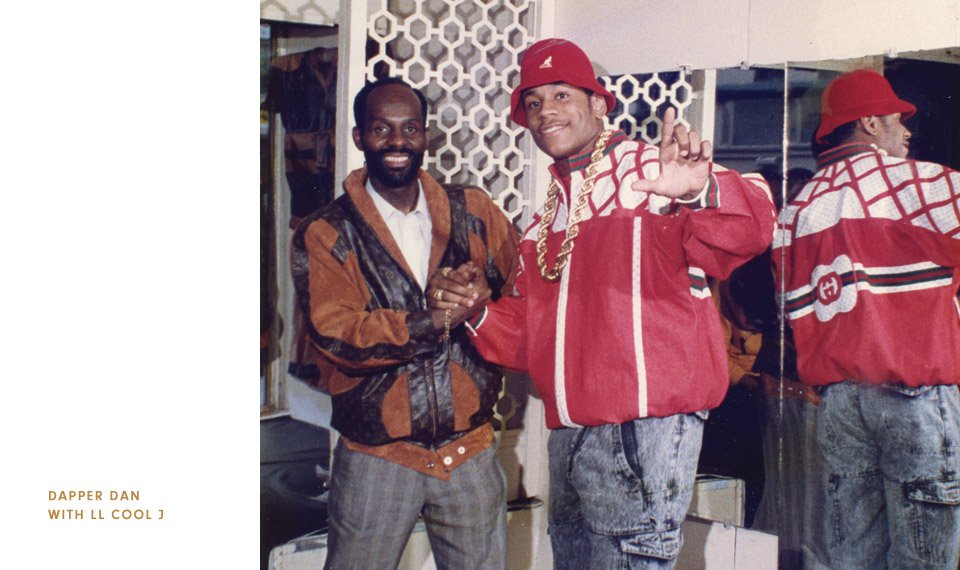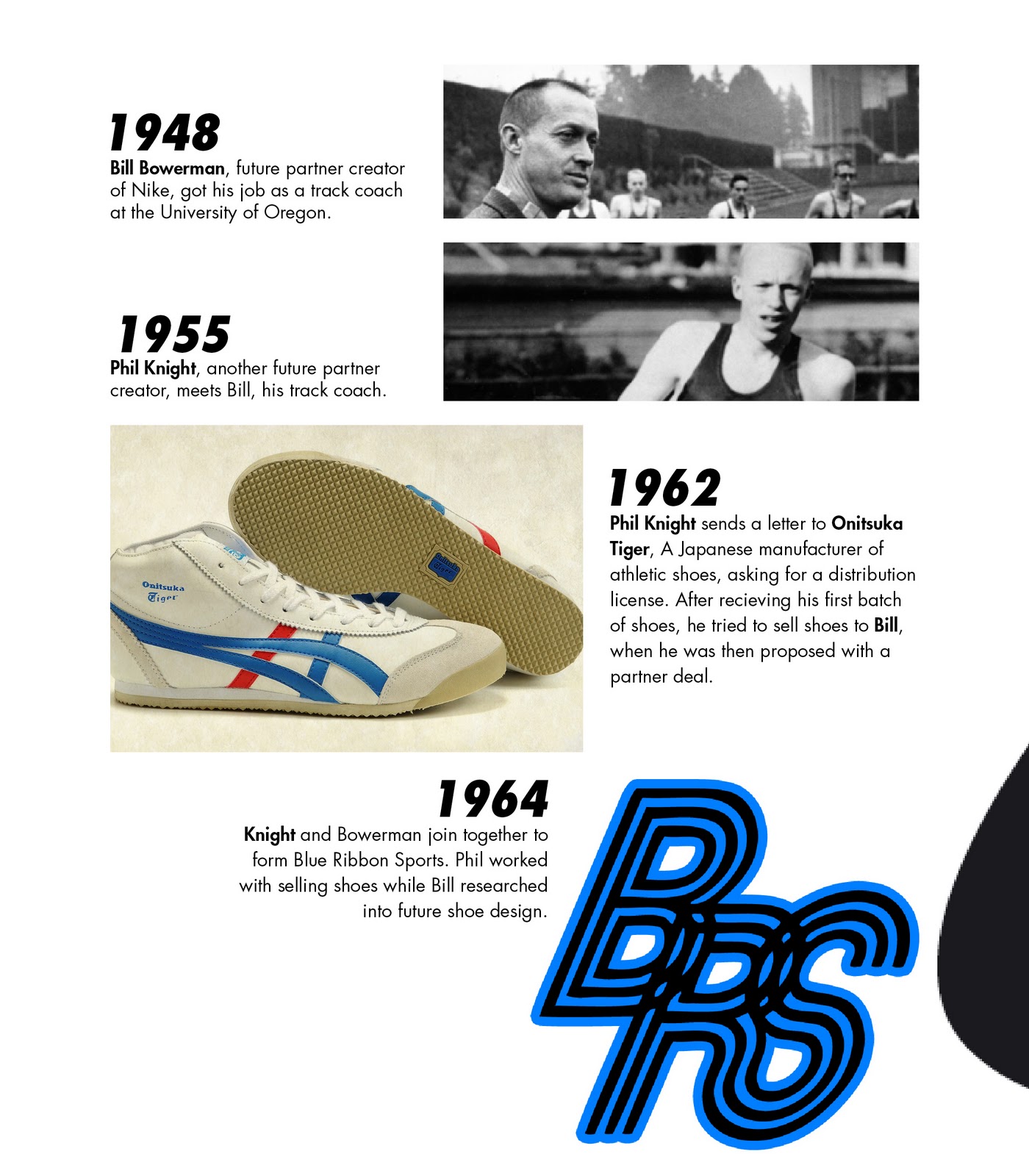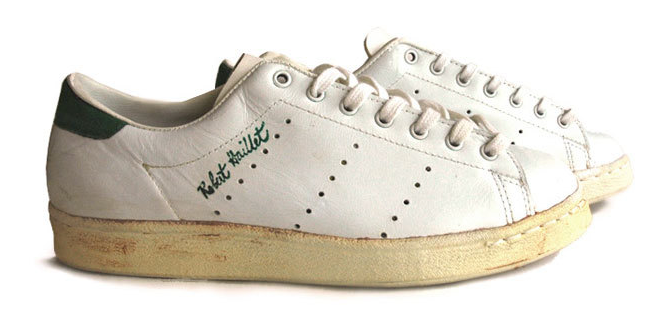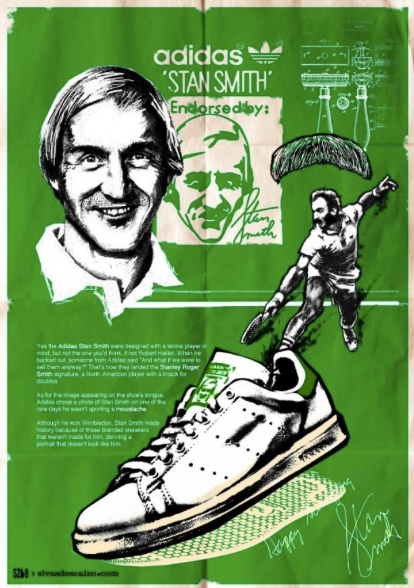PETEY GREENE : The Talking Machine
Petey Greene gave a voice to the unheard, speaking truth to power on his raw and uncensored TV and radio programs.
The power of media has been around forever in many different forms as paradigms shift. From 1967 to 1983 that paradigm included the infamous Ralph Waldo Green aka Petey Greene. A man who was a sometime drinker, a sometime drug user, a wordsmith, an ex-offender, an activist, a pioneer, comedian, emcee and a two time Emmy Award - winner. Out of all these labels one thing stood true he was always and sincerely Petey.
Ralph Waldo “Petey” Greene Jr. was born in 1931 to parents en route to the prison system. Raised by his grandmother in Washington, D.C., Petey grew up in the DC Streets and was known for his slick tongue and eye-catching fashion. Petey dropped out of high school to join the army and served in Korea. I have seen two different endings to his army career: in one he was honorably discharged and in the other, he was discharged from the military for heroin use. Either way, Petey was back in DC and in 1960 he was convicted of armed robbery and sentenced to 10 years at Lorton Reformatory.
Now if he wasn't Petey Greene, this would have been a time of despair, but Petey’s gift of gab allowed him the opportunity to speak to his fellow inmates over the public address system. His slick speech, animated delivery, infused with a street slang vibrato made his presence and voice golden in jail. Petey was such a bright spot to the guards that at one point they refused to let him be paroled even though he was eligible.
Petey Greene circa 1967 , two years after his release from prison. Outside the Neighborhood Development Center at 1507 9th Street NW in March 1967.
Using his street smarts he mustered up a plan straight out of a Hollywood script. Petey convinced a fellow inmate to climb a water tower in the prison yard and threaten suicide. The pre-arrangement would have Petey the knight in shining armor. Petey talked the man down in just minutes after others were unsuccessful after hours. Petey’s artificial act of heroism earned his release in the mid 1960’s.
Shock Jock : Petey Greene’s Washington
Petey Greene's local show “Petey Greene’s Washington” was picked up by a small cable station we all may know called Black Entertainment Television or BET. Greene often discussed issues around popular culture, racism, poverty, drug usage, and current events. Petey went on to become a television and radio talk-show host and a two-time Emmy Award-winner.
Petey Greene was an enigma that took over media with an authentic and in your face style. He made sure he was uncensored and free to speak his truth and share his point of view. Given present day media censoring, this was and in ways is still well ahead of its time.
Petey holding one of his two Emmy Awards.
In conclusion, Petey Greene is a figure I have come across many times over the years. From Wiz Khalifa reenacting a scene, proper Watermelon eating instructions and his outspoken POV on racial discrimination and systemic racism. My hope is that this short read will peak your interest and ignite google searches of Petey Greene and his triumphant story.
More on Petey Greene
Youtube ($3.99 Rental)
Wikipedia
Petey Greene - LINK
QUEEN OF NY : Madam Stephanie St. Clair
I love the Harlem Renaissance era and as I read many different accounts of Casper Holstein, Bumpy Johnson, Langston Hughes, Nicholas Brothers and many other pivotal players in the era. One person whose name I could not avoid is Stephanie “Madam Queen” St. Clair. She is acknowledged as the queen of policy banks in 1920’s Harlem, what we would today consider the lottery.
Stephanie St. Clair carved out a piece of the New York rackets during the 1920’s, battling mobsters such as Dutch Schultz and Lucky Luciano.
“I’m not afraid of Dutch Schultz or any other man living. He’ll never touch me.
— Stephanie St. Clair”
GREAT MIGRATION, was the movement of 6 million African Americans out of the rural Southern United States to the urban Northeast, Midwest, and West that occurred between 1916 and 1970.
She arrived in Harlem shortly before the Great Migration, which saw millions of African-American men and women leave the segregated South for the North. Early on St. Clair was a leader of the 40 Thieves, a local New York Gang, that ran extortion and theft rackets.
St Clair. would eventually become a resident in New York's Harlem neighborhood in the 1920s, making a name for herself by the number’s game, short temper and passion for fashion. She lived in a prosperous community in Harlem known as Sugar Hill, one of Harlem's elite neighborhoods. On a normal day she could run into her neighbor W. E. B. Du Bois, Thurgood Marshall or various other prominent figures of the Harlem Renaissance.
Stephanie was a leader in the “numbers game”, an illegal betting game that had taken Harlem by storm. Every day, Harlemites would place bets on what the numbers of the next day's lottery draw would be. These numbers were important to circulating the Harlem dollar in the community. The lottery would make some lucky Harlem Resident a nice sum of money, but win, loss or draw St. Clair always was a winner.
St. Clair was always dressed exquisite and made sure to make her presence known, she was known to raise her voice and unleash profanity or threats to get the attention of the toughest gangster. She would also be ahead of the game by using the power of media using ads in local black papers (Amsterdam News) to amplify the message of keeping money in the community or any other topics she felt was important.
Dutch Schultz, a New York City-area American mobster of the 1920s and 1930s who made his fortune in organized crime-related activities, including bootlegging and the numbers racket.
St. Clair developed and banked the lucrative numbers rackets in Harlem, in partnership with her enforcer, another well-known African-American mobster, Ellsworth “Bumpy” Johnson. Around 1930, mobsters started moving in on the numbers rackets as prohibition dissolved. Dutch Schultz, a Mob boss, was her top nemesis. There were over 30 people killed due to gang violence that centered on control of the popular local lottery.
By the mid-1930s, St. Clair, who slowly lost control of the numbers game, realized Schultz and the Mafia led by Charlie “Lucky” Luciano had too much influence and money to resist and she peacefully bowed out. Following her separation from the numbers game assassins shot Schultz and killed three of his associates on October 25, 1935.
“As ye sow, so shall ye reap...
-St. Clair’s telegram to Schultz on his deathbed, a Bible verse from Galatians 6:7”
Stephanie St. Clair and husband Sufi Abdul Hamid
St. Clair’s smart investments left her in a comfortable financial status. During this time she would marry a man named Sufi Abdul Hamid. Hamid claimed to be a descendent of Egyptian pharaohs. Hamid’s was also known for flamboyant style and community presence. In January 1938, Hamid was shot on his way to see a lawyer, and St. Clair was charged with the crime. During court proceedings it was revealed Hamid’s name was actually Eugene Brown, that he was from Philadelphia and that he had a mistress. St. Clair was convicted of assault and she was sentenced to state prison.
When she left prison, she continued to work for civil and economic rights for African-Americans, and by all accounts avoided all criminal activity until her death in 1969.
St. Clair fashionably in custody.
- QUEENIE
BARKLEY L. HENDRICKS : Birth of the Cool
Barkley Hendricks is an artist known for expressing his style through portraits with post-modern, contemporary and realism in mind. I am a lifelong fan of all forms of art and possess a special place for African - American visual art/artist. I actually took Visual Art classes from 8th grade until graduating undergrad at Duke University academically(09'). Duke University can actually take credit for me discovering Barkley Hendricks and to be more specific the Nasher Museum of Art on campus.
Around 2008 I was academically learning of the history of dance, the history of jazz and partaking in visual art courses. I picked up the school paper and as always would pick a random event to check out. At this time my love for Miles Davis and John Coltrane's creativity/person was at its peak. I almost could say the word "cool" was synonymous with Miles and the phrase "Birth of Cool" is very much related to the namesake of my blog "1959". Birth of the Cool is a compilation album by American jazz musician Miles Davis, released in 1957 on Capitol Records. This era in creation inspired my blog title (Check out my first blog post to get deeper into that).
I never heard of Barkley Hendrick's before this exhibit, but his art was already a part of me from first sight. I am pretty sure I stared at the first piece for at least 15 minutes checking out the detail and "cool" exuded.
Below is a slideshow of some of his works that transform your everyday person into a celebrity :
“His bold portrayal of his subject’s attitude and style elevates the common person to celebrity status. Cool, empowering, and sometimes confrontational, Hendricks’ artistic privileging of a culturally complex black body has paved the way for today’s younger generation of artists.”
KING OF NY : Casper Holstein
Casper Holstein , a philanthropist, humanitarian, entrepreneur and alleged mobster in New York in the 1920's know as the "Bolito King".
New Yorkers have been claiming to be King of New York from all types of backgrounds in my lifetime. I have heard rappers, drug dealers and even everyday residents say they are the "King of New York". One thing that is certain, true kings never have to announce their presence.
“Harlem’s favorite hero, because of his wealth, his sporting proclivities and his philanthropies among the people of his race.”
Enter Casper Holstein , a philanthropist, humanitarian, entrepreneur and alleged mobster. A man who took advantage of his opportunities and utilized a messenger role on Wall Street to create a multi-million dollar trusted New York lottery. While on Wall Street Holstein became intrigued by the stock market. Combining his self knowledge of the stock exchange and the numbers system Holstein created his own lottery coined "Bolito" which was a hit.
During the mid-1920s Holstein's earnings ballooned to $2 million from his lotteries. His wealth afforded him a lavish lifestyle which included various homes and a fleet of expensive cars.
Actor Jeffrey Wright plays Harlemite Valentin Narcisse in HBO's hit series Boardwalk Empire. Narcisse's character is loosely based upon the life and placement of Casper Holstein in 1920's Harlem culture.
FIVE FUN FACTS ABOUT CASPER
1. Casper Holstein was born on December 7, 1876, in St. Croix, Danish West Indies. His parents were of mixed African and Danish descent, and his father's father was a Danish officer in the Danish West Indies Colonial militia.
2. Holstein financed dormitories at Southern black colleges and supplemented the income of a number of Harlem Renaissance artists, writes and musicians.
3. Holstein's lottery profits also helped establish a Baptist school in Liberia and fund Marcus Garvey's nationalist movement.
4. In 1928, Holstein was taken hostage on a ransom of $50,000. Three days later he was released. No one was arrested and the incident was never solved. This action initiated the decline of Holstein's involvement in the Harlem numbers and the rise of New York mobster Dutch Schultz who eventually took control of Harlem gambling scene.
5. Actor Jeffrey Wright plays Harlemite Valentin Narcisse in HBO's hit series Boardwalk Empire. Narcisse's character is loosely based upon the life of Casper Holstein
Let the Coltrane Play...
MCM : Cognac Viseto
What is a COGNAC VISETO?
MCM continues to place personalized brass plates with a unique number engraved on each of its products to this day.
MCM leather goods generated a resurgence in popular culture and below is a brief look into MCM and its ostentatious beginnings. MCM originally stood for Michael Cromer München , the creator of the brand, founded in 1976 in Munich, Germany. It penetrated the minds of forward thinkers and fashion forward individuals in the 1980s for its flashy patterns and in your face demeanor. To minimize MCM to its signature pattern would be demeaning, in fact MCM has turned itself into a brand that represents almost regal/progressive thinking while undeniably connecting with hip-hop and fashion's ever changing dynamic.
In the early 90's, amidst cult like popularity MCM Owner Cromer was investigated for tax evasion and eventually lost his 250 million company. Investors were not convinced that Cromer could regenerate profitability and MCM was split up and eventually all rights were acquired by a South Korean retail business that can be credited with its 2000's success. The term "modern-classic" comes to mind when thinking of MCM , penetrating that unique place where brands lie that can transcend decades of change.
So back to the headline what exactly is a Cognac Viseto?
Cognac Visetos : MCM Brand Signature Logo
Cognac Visetos is MCM's brand’s signature logo which at a glance looks like a person squatting with wings, but is actually a laurel wreath which signifies the ethos of MCM , as a company true to honor and constant evolution.
Below is a gallery of the varied adoration for MCM...
So next time you see that MCM bag you can have a little more information on the history and if you already have a product you have short context on what you are repping...
"LET THE COLTRANE PLAY..."
Don't Sweat the Technique : GOLD GRILLZ
Tiger Flowers, first African American middleweight boxing champion.
In present day America gold teeth and hip hop culture go hand in hand. Have you ever wondered where this sense of style or status originated. Researching several versions of the origin of Gold Teeth I believe if not the originator the Etruscan women of Tuscany were among the first group to sport what we would now call grillz, golds, fronts or in South Florida "Walls".
The Etruscans lived in Italy inhabiting what we now call the region of Tuscany—from around 800 BC to 200 BC. They would eventually be conquered by the Roman Empire and much of their history lie in researching tombs and graves. Archaeologists found documentation of around 20 sets of teeth woven with golden wire. The earliest of these artifacts date back to the seventh century BC.
Etruscan women were among the first group of people to wear gold teeth for status. "Certain high-status Etruscan women deliberately had their front teeth removed in order to be fitted with a gold band appliance holding a replacement, or reused, tooth" This was not considered medical so this procedure was never done by a dentist, it was always a goldsmith for adornment.
It is safe to say that since 800 BC gold grills have been seen as symbol of wealth and prosperity. Hip Hop / popular culture have been paying homage subconsciously. Below are a few impressive grills paying homage to the BC status statement.
Jack Johnson, first African American heavyweight boxing champion.
Elderly woman from Turkmenistan.
Sean Carter aka Jay Z, music mogul and entrepreneur.
Elderly man from Tajikistan.
"LET THE COLTRANE PLAY..."
Do you even KNOLL bro?
Knolling is something I have been doing since I was a child, I always enjoyed symmetry and alignment. So in short I have been Knolling since the 80's. Knolling by definition is a process in which you arrange objects so that they are 90 degree angles from each other, then photographing them from above. Basically this a perfectionist dream come true!
Knolling creates a very crisp aesthetic and symmetry that is pleasing to the eye. Most knolling sets objects on a solid background, which makes the individual object easily visible and allows the objects to "pop". Knolling is used in all types of genres including hardware, fashion and decor to name a few. So you can see knolling from your favorite blogger, mechanic and fashionista. Below you will see the steps to knolling a couple fun facts and some great "KNOLLING" visuals.
4 STEPS TO KNOLLING
3 FUN FACTS ON KNOLLING
1. Knolling was created by Andrew Kromelow, a janitor at Frank Gehry's furniture fabrication shop.
2. Knolling eventually became popular through the work of Tom Sachs, an artist and sculptor who also worked with Gehry.
3. Sachs adopted the phrase "Always be knolling" (or ABK for short) as a motto for his work. By the late 80's, knolling had officially become a trend.
KNOLL ON...
"LET THE COLTRANE PLAY..."
MR. WELLS : God Shammgod
Growing up around sports my entire life there are many monikers for different aspects of sport and usually these monikers come from a supreme athlete. The term Moss'd is one that comes to mind when thinking of Football , giving reference to the unstoppable nature of "The Freak" Randy Moss when the pigskin is up for grabs.
In basketball you have the crossover, but when you sprinkle a little flare and a little pepper on top you get the SHAMMGOD. The man behind that name is non other than God Shammgod, current Player Development coach for the Dallas Mavericks, a playground legend hailing from Brooklyn NYC.
God was a teammate of Metta World Peace (Ron Artest) while in high school, childhood friends of Mase and Cam'ron and credited with helping the "Mamba" aka Kobe Bryant hone his dribbling skills. In short, he has been around talent and is still praised for his uncanny ability to maneuver pass defenders.
In this video God discusses teaching Kobe Bryant his signature crossover dribble.
“I don’t think he can do it like I can do it, but he did it justice... (referencing Kobe perfecting the “Shammgod”)
-GOD ”
God didn’t last long in the NBA, playing just 20 games his whole career. He left a timeless move and a playground legacy that will never be forgotten. God has stayed close to hoops after being a player. He has been a part of his Alma Mater's staff at Providence and currently the Dallas Mavericks.
I used this blog to pay homage to a player that is still alive and left something in a sport that will last forever. Players like Earl " The Goat" Manigault, Skip to my Lou and Demetrius "Hook" Williams are some young inner city youth's Lebron James, Michael Jordan and Larry Bird. All phenoms don't make it to the pinnacle, but they leave a lasting impression on the youth to be relentless without incentive just the respect of your environment. Sometimes that's enough.
THANK YOU SHAMMGOD!
LAURIE : The Football Dandy
Laurie Cunningham in all his Splendor.
Laurie Cunningham may not be a household name in the US, but I am sure he was lead my way through Google's complex algorithm of my constant search for outstanding athletes, trendsetters and style tastemakers. Laurie Cunningham was the son of a Jamaican prize horse jockey hailing from the north side of London.
The above image has popped up in my Pinterest numerous times and I just assumed it was a guy from the Sub-Saharan culture Sapeur Movement or Society of Tastemakers and Elegant People. To my astonishment this is Laurie Cunningham, the first black professional footballer to represent England at any level.
“At a time when institutionalised racism was rife throughout society it would have been easy for Laurie to fade into the background, but his passion for music and fashion ensured he stood out from the crowd...”
Cunningham was the first of a group of homegrown African - American pioneers who shook up the English football landscape in the 1970s and 80s. He achieved a total of six full international caps. The black players of this generation were required to tune out the constant disrespect of chants and unimaginable actions of having bananas hurled at them by fans. SALUTE TO MR. CUNNINGHAM for fighting through the noise to leave a legacy of Style and Grace.
Check out the below to see a 4 part documentary giving you a little more context on the legendary Laure Cunningham!
The Man behind the Air : "H"
Howard "H" White was a hometown hero out of Hampton, Virginia. White was well known as a playground legend with handles that left defenders gasping for air and command of the court resembling General Custer. White was being recruited by the likes of North Carolina’s Dean Smith and Maryland’s Lefty Driesell, the former whom would help groom a young prospect later known as "Air" Jordan.
At Maryland, White dazzled onlookers just as he did in his hometown of Hampton, Va. White's hard work, was rewarded by having his nickname “H” placed on the back of his jersey instead of his last name. Not sure if this has ever been done in NCAA Hoops, but this made "H" a household name. Maryland had an NCAA Elite 8 appearance and was the NIT Champion in White’s last two years with the Terps.
"H" produced a short-lived NBA career due to injury, but this would just prove to show his impact on Basketball was imminent by any means. "H" would sign on as a Field Representative with Nike. During this tenure White developed a relationships with budding stars, one of them being a young man by the name of Michael Jeffrey Jordan.
““I could not have made it through my fifteen-year career without Howard White.”
—MICHAEL JORDAN”
"H" would lure Jordan to "The Swoosh" after watching his exploits in the college ranks. The attack plan was to get Jordan to drop the Converse sneaker and be a leading tastemaker of a sneaker phenomenon. In other words, Jordan was known for wearing only Converse sneakers while with Carolina, but Nike wanted him. The rest is history.
Jordan and White would eventually create Jordan Brand under Nike. Fast Forward to the present and "H" is now Vice President, Jordan Brand. As stated earlier Howard "H" White's impact on the game of Basketball was imminent. Instead of simply being known as a court General for the Terps, he is also know as the "Man Behind the Air", raising the Jordan brand to iconic status and laying a path for former student-athletes to pivot to create synergy between sports and corporate America.
The Original Jordan "Wings" logo paid homage to Mike's freakishly-long wingspan and ability to fly across the floor. The logo was created in 1985.
Thanks "H"
DAPPER DAN : High Class Street Fashion
The year is 1987 and the streets of Harlem are buzzing full of energy and style. Hip Hop is at the forefront of creativity and fashion, and at the epicenter on 125th street is the fashion Mecca, DAPPER DAN's BOUTIQUE.
On any given day you could bump shoulders with L.L. Cool J, Rakim, Mike Tyson, Big Daddy Kane or maybe even the infamous "D Boy" Albert "ALPO" Martinez. These days Dapper Dan's styles could be labeled many words such as phony, bootleg and Fugazy to say the least.
“I’m so dapper man, funky fresh Dapper Dan...
-Tyler the Creator”
Instead of those frivolous terms, Dapper Dan's remix of European high fashion mixed with streetwear was a badge of honor amongst hip-hop's elite and tastemakers.
The smile of a Genius. #FashionKilla
As Dapper Dan's fame and fortune grew, the European fashion powers that be would begin an intricate plan to terminate this great time in hip hop expression. Though the legal troubles ended the Renaissance on Harlem on 125th street Dapper Dan is still a staple in the fashion industry and a example to urban youth to GO-DO-BE.
Below are some of Dapper Dan's most iconic pieces:
LADIES LOVE COOL JAMES
"IRON" MIKE TYSON
SALT-N-PEPA
ALBERT "ALPO" MARTINEZ
BOBBY B.
DAPPER DAN'S MCM JEEP WRANGLER $$$
FOR THE PEOPLE, BY THE PEOPLE...
GAMBLE AND HUFF : The Architects
Architects usually get credit for the design and supervision of builds and that stands when mentioning Kenneth Gamble and Leon Huff. Stick by Stick, Brick by Brick Gamble and Huff built the house of TSOP (The Sound of Philadelphia). This home was equipped with 15 Solid Gold Singles and 22 Gold Albums.
Harold Melvin and the Blue Notes, Teddy Pendergrass, The O'Jays and Billy Paul etc. would utilize Gamble and Huff's silky smooth strings, thumping basslines and sliding hi-hat rhythms to create chart- topping hits.
Below are a few of the hits the dynamic duo blessed us with:
BLUE RIBBON SPORTS aka NIKE
I recently had the chance to complete SHOE DOGS : A MEMOIR BY THE CREATOR OF NIKE. If you need motivation you must read how BLUE RIBBON SPORTS grew from a distributor for Japanese shoe maker Onitsuka Tiger (NOW ASICS) to the modern day sneaker juggernaut known as NIKE. I attached a couple images to show the transition. If you get time and need a boost or a little motivation SHOE DOGS is a must read. #ReadingRainbow
“(1962) Phil Knight sends a letter to Onitsuka Tiger...asking for a distribution license...”
“(1978) The name of the company official switches from Blue Ribbon Sports to Nike...Nike then creates the Nike Air-Sole support for future shoe designs...
”
#ReadingRainbow
BANKSY : Three Fun Facts
ENIGMATIC / ECCENTRIC / EFFERVESCENT
BANKSY%$@?
1. He once created the opening Couch Reel on 'The Simpons'. #MILHOUSErocks
2. He receieved an Oscar nomination for his 2010 documentary entitled, ‘Exit Through the Gift Shop‘. #WhereIstheEXIT
The first film by renowned graffiti artist Banksy, became the hottest ticket at the 2010 Sundance Film Festival where it made its world debut.
3. THIS MIGHT BE HIM!
1959. imma let you finish, but Basquiat had...
#GoDoBe
STAN SMITH : The adidas Robert Haillet
The Stan Smith before the Stan Smith was the Stan Smith. #RobertHaillet
“In 1965 the tennis shoe was given the name “adidas Robert Haillet” after the French tennis player. It wasn’t long after that Haillet retired from tennis and adidas went looking for a new face for the increasingly popular shoe.”
“During the 70s there was some transition from the Haillet to the Stan Smith. Between 1973 - 1978 the shoe was still called the Robert Haillet but had a portrait of Stan Smith on the tongue.”
MACK : The Other Robinson
Mack Robinson, who was a silver medalist in the 1936 Berlin Olympics but would be overshadowed by the track great Jesse Owens and by his younger brother, the pioneering baseball Hall of Famer Jackie Robinson. He was one of America's best sprinters of the 1930's, but Matthew Mack Robinson hardly seemed destined for athletic feats.
While Robinson was in high school in Pasadena, wrote David Wallechinsky, the Olympic historian, ''coaches did not consider him athletic material and made his mother sign a statement absolving them of blame if his heart was damaged.''
Even when he showed formidable talents while in junior college, it seemed that Robinson would not even make it to the trials for the 1936 United States Olympic track team.
''No one paid an athlete's way in those days,'' Robinson once recalled. ''The trials were in New York, and Pasadena Junior College didn't have any money to send me. And I didn't have a dime to make a trip like that on my own.''
He got there because Pasadena businessmen raised $150 each for him and a teammate.
Robinson qualified for the Olympic team and, in Berlin, he ran second in the 200 meters to Owens, finishing in 21.1 seconds as Owens ran an Olympic-record 20.7 seconds for one of his four gold medals.
''Jesse got the coaching, I didn't,'' he said long afterward. ''I saw his television program, about his return to Berlin. He said that he and the coaches had studied the styles of every runner. That was true. They studied me, too.''
In the Olympics, Robinson ran in the same spikes he wore all season in junior college.
''It's not too bad to be second best in the world at what you're doing, no matter what it is,'' he said of his Olympic silver medal. ''It means that only one other person in the world was better than you. That makes you better than an awful lot of people.''
But when Robinson returned to Pasadena after the Olympics, he felt unappreciated. ''If anybody in Pasadena was proud for me, other than my family and close friends,'' he said, ''they never showed it. I was totally ignored. The only time I was noticed was when somebody asked me during an assembly at school if I'd race against a horse.''
In 1937, he set a national junior-college record of 25 feet 5 1/2 inches in the long jump (later broken by his brother Jackie) and he won national collegiate and Amateur Athletic Union track titles at the University of Oregon in 1938.
He quit Oregon in his senior year to return home and support his family. Back in Pasadena, wearing his Olympic sweatshirt with a big USA on the front, he pushed a broom sweeping downtown streets.
But when a judge ordered public pools in Pasadena opened to blacks, the city retaliated by firing all black workers, including Robinson.
He later worked in a variety of jobs for the city of Pasadena and did volunteer work with youth organizations.
He was not forgotten. In the opening ceremony of the 1984 Olympics, the giant Olympic flag was carried into the Los Angeles Memorial Coliseum by six gold medal winners, the grandson of one (Bill Thorpe Jr., grandson of Jim Thorpe) and Mack Robinson.
His affection for Jackie Robinson, his younger brother by four years, was strong, and he felt that not enough had been done to preserve the memory of Jackie, who broke the major leagues' color barrier in 1947 with the Brooklyn Dodgers.
''There was no one more competitive than Jackie,'' he said. ''No one could tell him he couldn't do something he wanted to do. No man was more appropriate for the tough assignment he received.''
But he also felt that his identity had been lost because of Jackie's achievements. ''I am getting awfully tired of being referred to just as Jackie Robinson's brother,'' he once said.
But the brothers, natives of Cairo, Ga., were honored together by their adopted hometown when the Pasadena Robinson Memorial was dedicated in 1997 in Centennial Plaza, across from City Hall.
Mack Robinson is survived by his wife, Delano, and their three sons and three daughters; a son and a daughter from previous marriages; 25 grandchildren and 8 great-grandchildren.
Why 1959?
People ask why 1959. for the name of an integrated marketing service and coffee brand name. It's simple, 1959. was the pivotal year that Jazz was revolutionized by four juggernauts Miles Davis, Ornette Coleman, Charles Mingus and The Dave Brubeck Quartet. I have worked for many brands and helped boost their image in popular culture, but 1959. is my collective of past work, coffee interest, blogging of fashion, art, style and popular culture. This is my opportunity to break away from convention and create, explore and express. #GODOBE



